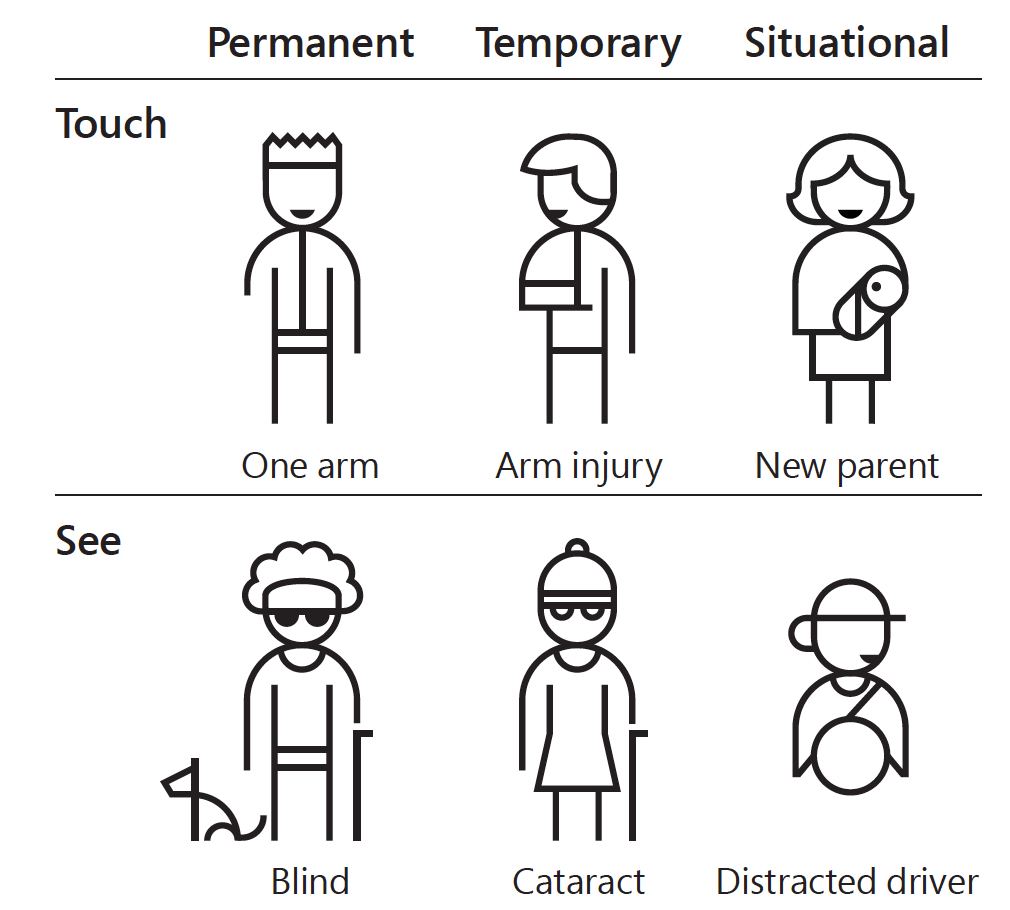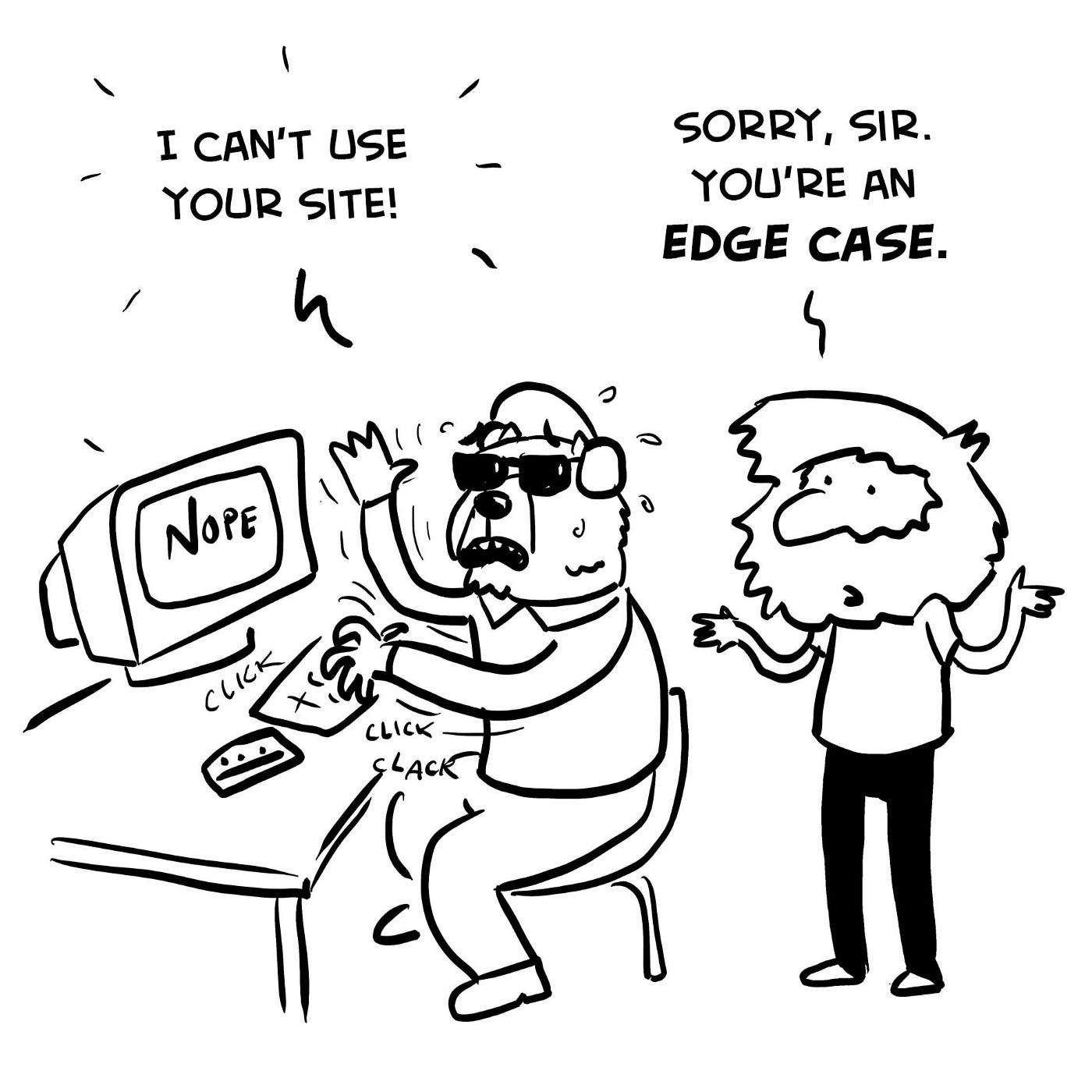When I meet new people and share research interests, I'm often asked the question "Why are you interested in the accessibility domain?". There are so many reasons, so I usually pick one or two of them and tell. Most of the time, people show respect for how I'm involved in such "volunteering" and chose to pursue that as my career. Should I really be praised? There is so much more than just "doing good for others" in accessibility research.
Below is why I am passionate about tackling inaccessibility problems.
1. Nobody is free from disability.
I was born with irregularity of the spine, having one less spine bones than others. This led to daily back pain and developed complications as severe scoliosis and slipped disk. Because of this, I have to stand up from time to time when working and should never carry any heavy object.
I wear contact lenses. Without them, I only see blurred images of the real world.
Everyone has different capabilities. They may be slow in reading or have a wrist problem. When we are engaged in other tasks - driving, cooking, makeup - our hands are tied. When we get older, our physical capability is not the same as is used to be.

I love the term "“temporary or situational disabilities”,
illustrated in Microsoft’s inclusive toolkit
2. Accessibility helps everyone.
Autonomous vehicles were first developed for people with motor impairment. Now? Flooding news every day on how the technology can change the future for everyone.
Voice user interfaces were first targeted at people with visual and motor impairment. Today, we talk to computers using Apple Siri, Google Home, Amazon Alexa, and many more.
If we design with diverse abilities in mind, we make things easier for everyone.

PWD are more than just edge cases - comic by Pablo Stanley
3. Inaccessibility means isolation.
Everyday, convenient technologies are being introduced to educational setting, working environment, and even to or daily home. Without a specific focus on inclusiveness, people with disabilities(PWD) will be left out of these critical opportunities, further widening gap in education level, income level, and more.
Inclusion is a matter of fairness.
At the same time, inclusion is related to public interest.
Recall that 15% of the world's population lives with some form of disability, of whom 2-4% experience significant difficulties in functioning. We want them come into their own, fully utilizing their talent and potentials.
4. Solving accessibillity is fun.
Interviewing with PWD is always insightful as they share new perspective of viewing the technology. They are great in coming up with cool workarounds on their own and it's fascinating to learn and think of different ways to use the computer.
Also, we never run out of problems to solve. Whenever a device with new interactions is introduced, there comes together a dozen of accessibility issues to solve. When touchscreen interface first came out, it panicked people with visual impairment, while an exciting moment for many of us. There will always be important problems to solve, which motivates me.
5. Now is the opportune moment.
With the potential of everdeveloping AI these days, accessibility is a place where AI technologies can be leveraged for impactful work. While accessibility has been regarded more as a matter of a practice, now we can develop autonomous solutions in low-cost, more scalable ways.
댓글
댓글 쓰기